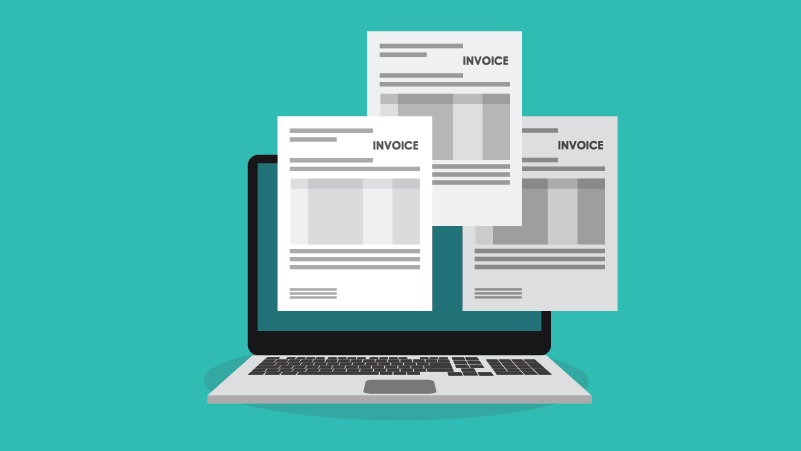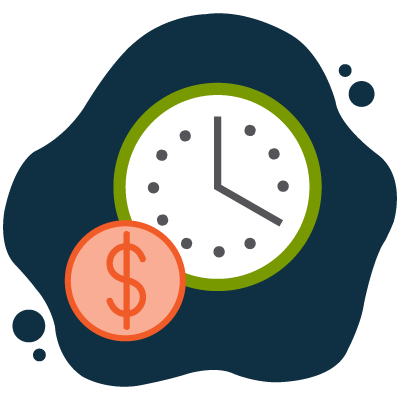
Imagine this: your accounts payable (AP) department is effortlessly processing and paying both paper and electronic invoices that your organization receives from suppliers.
AP automation can turn this vision into reality. And yet, 90% of organizations are currently processing invoices with little to no automation.
If your organization is part of this statistic because you’re unfamiliar with accounts payable automation and how you can leverage it, you’re in luck. This article explains what invoice processing automation is, how it works, the benefits it offers, and more.
What Is AP Automation & How Does It Work?
Accounts payable automation is a method of digitizing the AP process, minimizing manual tasks, and, ultimately, streamlining invoice processing. The best AP automation solutions consist of both technologies, such as robotic process automation (RPA), artificial intelligence (AI), and optical character recognition (OCR), as well as expert business process management services. This combination results in end-to-end invoice processing automation – from receipt to approval.
Here’s how it works:
- Receipt: AP automation solutions use technology to collect invoices submitted via email, Secure File Transfer Protocol (SFTP) uploads, and supplier portals. Top solution providers can also receive and digitize paper invoices on your behalf.
- Data capture: The best accounts payable automation solutions use AI, OCR, and other advanced technologies to extract supplier names, purchase order (PO) numbers, invoice amounts, remit to addresses, and other header and line-item details from invoices.
- Pre-matching: Top solutions can match invoices to POs and delivery receipts. The ideal solution provider can effectively pair invoice lines to PO lines, even matching line-item details captured from one invoice with data on multiple POs.
- Validation: AP automation solution partners use several methods to validate your data – from using remit to addresses to look up vendor IDs in ERP and accounting systems to reviewing tax calculations to double checking that all required fields are present.
- Approval: Non-PO invoices and PO invoices that require review are digitally routed based on your business rules. Approvers are notified of invoices awaiting their review and alerted when an invoice is approaching its due date. Managers are always aware of where invoices stand in the approval process and invoices can even be automatically escalated to them for review.
- Integration: Information on approved invoices is posted directly to your ERP application without the need for re-keying. Best-in-class AP automation solutions integrate with leading ERP platforms, such as SAP, Oracle, NetSuite, Infor, and PeopleSoft.
- Payment: Some accounts payable automation solutions integrate with payment systems, providing a single platform for paying suppliers in their preferred method – whether it’s Automated Clearing House (ACH), virtual card, or wire. Payment information is automatically synced with your ERP or accounting software package in real-time, streamlining reconciliation and potentially expediting financial close.
- Reporting: Stakeholders stay in the know wherever they are with dashboards that display invoice statuses and key performance indicators (KPIs). Drill-down capabilities help identify cash flow trends and can be used to uncover the source of operational issues. Exports get information to downstream systems and business processes quickly while ad hoc reporting makes it easy for AP staff to adapt to changing business requirements.
- Compliance and security: Accounts payable automation solutions ensure process compliance and protect sensitive information through user permissions, systematic workflows, separation of duties, complete audit logging, data encryption, and data retention in a centralized cloud archive.
What Are the Benefits of AP Automation?
Automated invoice processing delivers significant benefits to organizations of all sizes, across all industries. Here are just a few of the advantages:
Cost Savings
It’s no secret that manual AP processes are expensive. The labor involved in manually processing and paying invoices submitted by suppliers represents a significant portion of overall AP costs. And to make matters worse, AP departments that rely on manual processes have no choice but to add staff as their volume grows (yet another expense).
Automated AP processes, on the other hand, cost three times less than manual ones. They eliminate those labor-intensive, manual tasks as well as the need to hire employees as invoice volume fluctuates. Your AP automation partner will be ready to handle any number of invoices for you.
Improved Efficiency
With technology and a trusted partner handling all the manual, repetitive tasks associated with invoice processing, your AP staff will no longer be bogged down. They’ll have time to focus on more valuable tasks, such as collaborating with stakeholders and building stronger relationships with strategic suppliers. One recent survey even found that automation solutions boost productivity for over 90% of employees.
The AP staff at one organization went from working 70 hours a week and focusing on tedious, manual tasks to working 40 hours a week and focusing on high-value functions. Download our success story to learn how!
Fewer Errors
How many times have mistakes been made during manual invoice data entry? Thinking “too many to count”? If so, you’re not alone. Human errors are incredibly common in any manual process.
Fortunately, AP automation solutions reduce the risk of error and ensure accuracy in financial records by eliminating manual work as well as validating data against predefined business rules, ensuring tax calculations are correct, and flagging discrepancies for review.
Faster Cycle Times
By digitally routing invoices based on pre-defined business rules and maintaining insight into invoice aging, you can eliminate the friction that so often delays approvals. Faster invoice approvals reduce the possibility of late payment penalties, create more opportunities to capture early payment discounts, reduce calls and emails from suppliers about invoice statuses, and improve forecasting.
Stronger Supplier Relationships
Prompt and accurate payments alone can improve supplier satisfaction and trust. But the top accounts payable automation solutions take it a step further and provide suppliers with self-service options for checking invoice and payment statuses at their convenience. This helps foster even stronger relationships.
Enhanced Visibility
AP automation puts smart insights into cash and spending at the decision-makers’ fingertips. Data and documents are securely stored in a centralized, cloud-based repository and available on-demand to any authorized user – regardless of their location or device. AP managers can track performance metrics, identify bottlenecks, and spot opportunities to optimize processes.
Reduced Risk
AP automation solutions help protect an organization’s finances through the enforcement of internal controls, company policies, and regulatory requirements. The fact that they eliminate the need to use email for invoice approval routing is incredibly beneficial in and of itself – especially since 71% of organizations fell victim to payment fraud via email in 2022.
Top solution providers also undergo SOC 2 Type 2 audits and comply with PCI DSS, HIPAA, and GDPR guidelines for protecting sensitive information.
How Do I Get Started with AP Automation?
In order to achieve all of the benefits mentioned, you need to start the AP automation process off on the right food. Here are the key steps to take:
- Evaluate your current AP processes. Consider your key pain points and ideal areas of improvement. Pro tip: Don’t be afraid to get your staff’s input!
- Set clear (and reasonable!) objectives for automating your AP processes and measuring progress.
- Obtain buy-in from key stakeholders such as your CFO, controller, and IT department. Pro tip: Ask your prospective invoice processing automation partner for help in this area. They may be able to provide you with information that can help you get decision-makers on board.
- Establish a project team representing key stakeholders. Make the team responsible for evaluating partners, assisting with driving adoption among their staff, and measuring results.
- Begin cleaning your data – from vendor information to POs to approver data – to ease the transition to an automated process.
- Research and rate prospective partners. Include factors like software functionalities, customer references, cost, implementation process, and customer support services in your criteria.
- Develop an implementation plan detailing milestones, timelines, and responsibilities. Pro tip: Ensure training is included in your implementation plan. Your partner should be able to conduct software training sessions and provide user guides for your staff.
Get Started with Automated Invoice Processing Today
By now, the fact that few finance and administration tasks are as time-consuming, labor-intensive, and paper-filled as manual invoice processing should be apparent.
But the fact that AP automation can streamline invoice processing and deliver a variety of benefits should be apparent as well. By partnering with the right solution provider, you can reduce costs, improve efficiency, minimize errors, accelerate cycle times, gain insights, strengthen supplier relationships, and mitigate risk.
Ready to get started today? Contact us to speak to a business process automation expert. If you’re not ready to talk to us just yet, feel free to check out our free guide on the importance of automating invoice processing to learn more.
